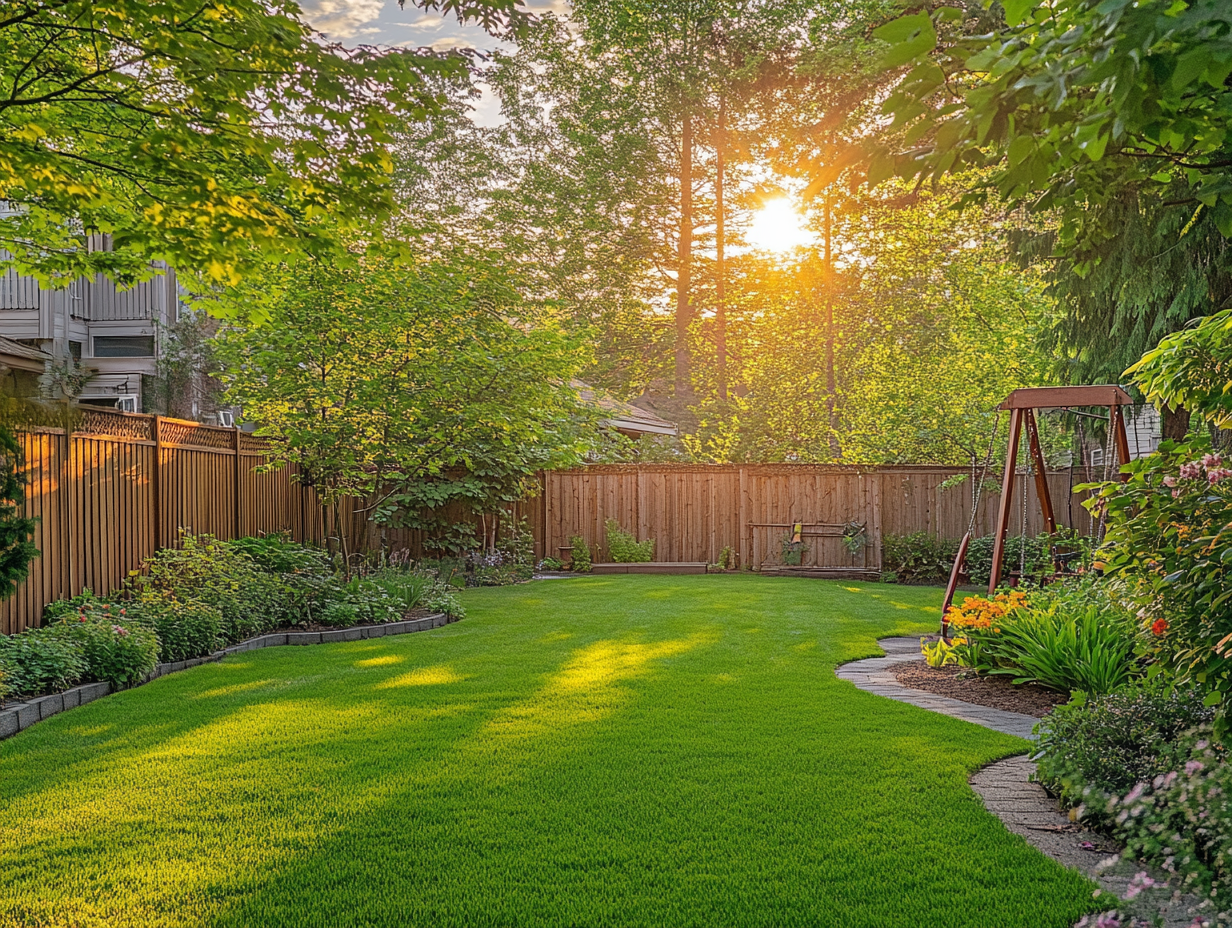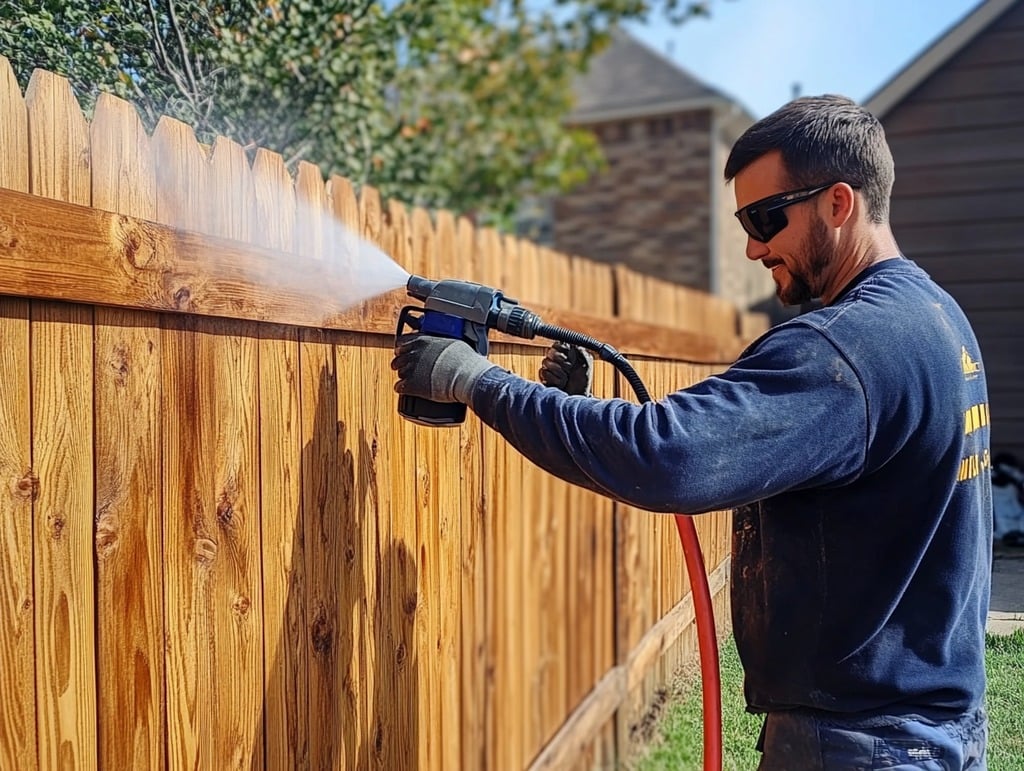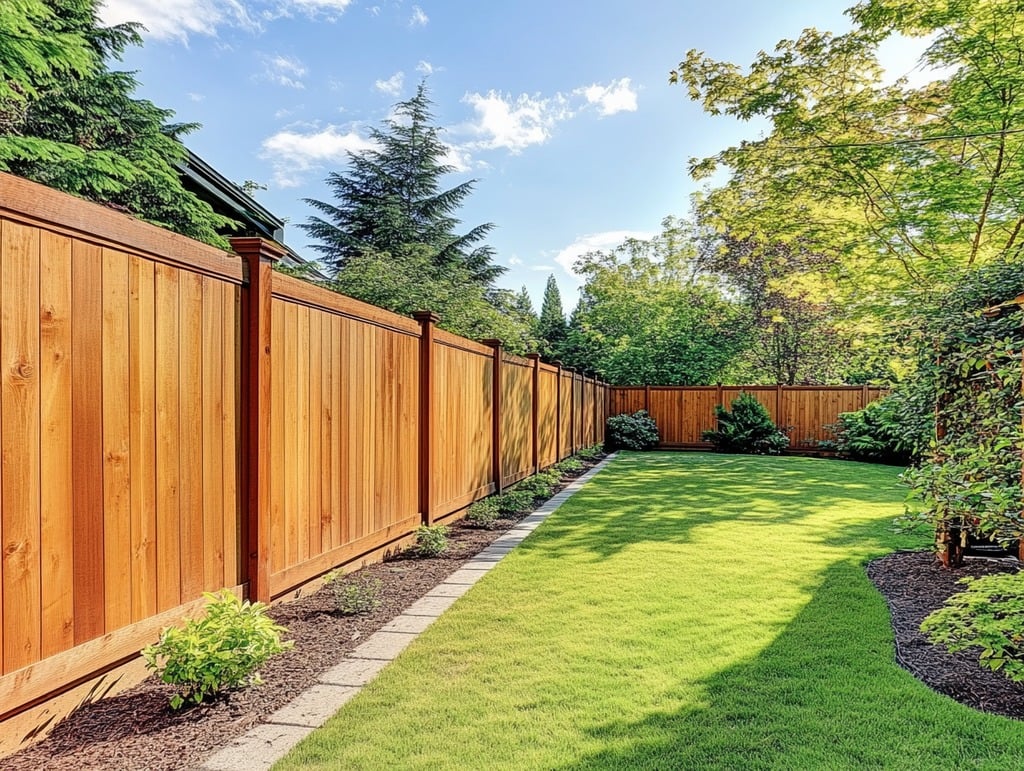Wood fences are a popular choice among homeowners in Southeastern North Carolina for their classic, natural look. But as lovely as they are, wood fences are also exposed to a unique mix of weather conditions in this region. The area’s hot, humid summers, heavy rainfall, and mild winters can take a toll on untreated wood, causing warping, rotting, and fading over time.
In this guide, we’ll explore the best ways to protect and maintain your wood fence through every season, helping it withstand the elements and stay looking great for years to come.
Why Wood Fence Maintenance Matters in Southeastern NC
Southeastern North Carolina’s climate is a bit of a double-edged sword for wood fences. While the mild winters mean you won’t have to worry too much about snow, the high humidity, frequent rain, and strong sun can quickly degrade untreated wood. Here are the main challenges that homeowners in this area need to keep in mind:
- Moisture – With an average annual rainfall of over 50 inches, wood fences are at a constant risk of rot and mold.
- Humidity – High humidity levels can cause wood to swell, warp, or attract mildew, which can weaken the structure.
- Sun Exposure – The intense summer sun can fade wood quickly, leaving it vulnerable to cracks and splits.
- Termites and Insects – North Carolina is home to termites and other wood-boring insects that can damage fences if not treated.
Seasonal Tips for Wood Fence Maintenance
To keep your wood fence strong and beautiful, it’s essential to follow a maintenance plan tailored to each season’s specific challenges. Here’s a breakdown of what to do for your wood fence in each season.
Spring: Inspect and Prepare
Spring is the perfect time to inspect your fence and repair any damage caused by winter or storms. Here’s what to focus on:
- Inspect for Damage
Walk along your fence line and look for signs of rot, cracks, loose nails, or any leaning sections. Pay close attention to areas where the fence touches the ground, as these spots are most prone to rot. - Clean the Surface
Remove any dirt, mildew, or algae that may have accumulated over the winter. A simple mix of water, mild detergent, and a scrub brush can work wonders. For tougher stains, consider using a power washer on a low setting to avoid damaging the wood. - Apply a Fresh Coat of Sealant or Stain
Spring is an excellent time to reapply a protective sealant or stain. Look for products that are water-repellent and have UV protection to shield your fence from rain and sun. - Trim Nearby Vegetation
Overgrown plants can trap moisture against the fence, accelerating rot. Keep any bushes, vines, or tree branches trimmed back to allow air circulation around the wood.
Summer: Protect Against Sun and Heat
Summers in Southeastern NC can be brutally hot, and the intense sunlight can dry out and fade your fence. Here’s how to minimize the impact:
- Check for Warping
The heat can cause wood to expand and warp. Walk along your fence and look for any boards that have started to bend or twist. Replace any damaged boards as needed. - Apply UV-Blocking Stain
If you didn’t get around to staining your fence in the spring, it’s not too late. Applying a UV-blocking stain or sealant will help protect your fence from the summer sun. - Water Your Fence (Yes, Really!)
In extreme heat, dry wood can start to crack or split. Lightly hosing down your fence every couple of weeks (especially during dry spells) can help maintain its moisture levels. Just don’t overdo it, as excess water can promote rot.
Fall: Get Ready for Moisture
Fall brings more rain and higher humidity levels, which can be tough on wood fences. Here’s how to prepare:
- Clean Off Debris
Leaves, pine needles, and other debris can collect at the base of your fence, trapping moisture and inviting rot. Clear away any buildup along the fence line. - Seal Any Exposed Areas
If you notice any bare wood or fading areas, touch up the sealant or stain before the wetter winter months arrive. Ensuring the wood is well-sealed will keep moisture from penetrating and causing decay. - Inspect for Insect Damage
Fall is a good time to check for signs of termites or other insects. Look for small holes or chewed wood, especially near the ground. If you see signs of an infestation, consult with a pest control professional to address the problem before it spreads.
Winter: Protect from Rain and Humidity
Even though winters are mild in Southeastern North Carolina, rain and humidity can still impact your wood fence. Here’s how to keep it safe:
- Check for Drainage Issues
Make sure water isn’t pooling around the base of your fence. Poor drainage can lead to prolonged exposure to moisture, increasing the risk of rot. - Clear Off Moss and Mold
Winter’s cooler, damp weather can encourage moss and mold growth. Regularly inspect your fence for any greenish patches and scrub them off as needed. - Inspect for Loose Boards or Posts
Strong winter storms can loosen fence boards or posts. Walk along your fence line and check for any parts that need to be tightened or reinforced.
General Tips for Year-Round Fence Protection
In addition to seasonal maintenance, here are some general tips for protecting your wood fence throughout the year:
- Use Pressure-Treated Wood
If you’re installing a new fence, consider using pressure-treated wood, which resists rot and insect damage better than untreated wood. - Invest in Quality Stain or Sealant
A good-quality stain or sealant can make all the difference. Look for products that are designed for outdoor wood and offer both waterproofing and UV protection. - Repair Damage Promptly
Small issues like loose nails, small cracks, or chipped stain might seem minor, but they can lead to bigger problems if left unchecked. Tackle repairs as soon as you notice them. - Consider Adding a Top Cap
A top cap can help protect the top edge of the fence from rainwater seeping in, reducing the chances of rot.
FAQs
Q. How often should I reseal my wood fence in Southeastern North Carolina?
A. Most experts recommend resealing every 1-2 years, but high humidity or intense sun exposure may require annual maintenance.
Q. Can I use regular paint on my wood fence?
A. It’s best to use stain rather than paint on wood fences. Stain penetrates the wood and provides better protection against moisture and UV rays, while paint tends to sit on the surface and can peel or crack.
Q. How can I tell if my fence has termite damage?
A. Look for small holes, chewed wood, or tiny piles of sawdust near the base of the fence. Termites can cause significant damage if not addressed, so contact a pest control professional if you see signs.
Wrapping Up
Maintaining a wood fence in Southeastern North Carolina’s unique climate isn’t difficult, but it does require a little attention each season. By following these tips, you can keep your fence looking beautiful and standing strong for years to come. Regular inspection, cleaning, and sealing go a long way in preventing the common issues that arise from humidity, rain, and sun exposure.
A well-maintained fence not only boosts curb appeal but also increases the longevity of your investment. With a bit of seasonal TLC, your wood fence can thrive in Southeastern NC’s weather, adding charm and privacy to your home year-round.







